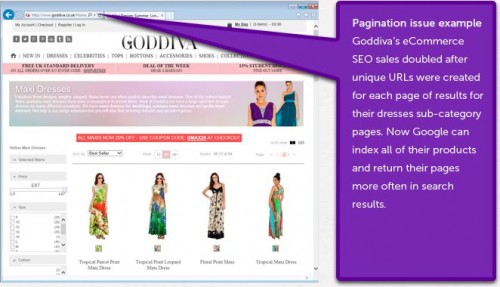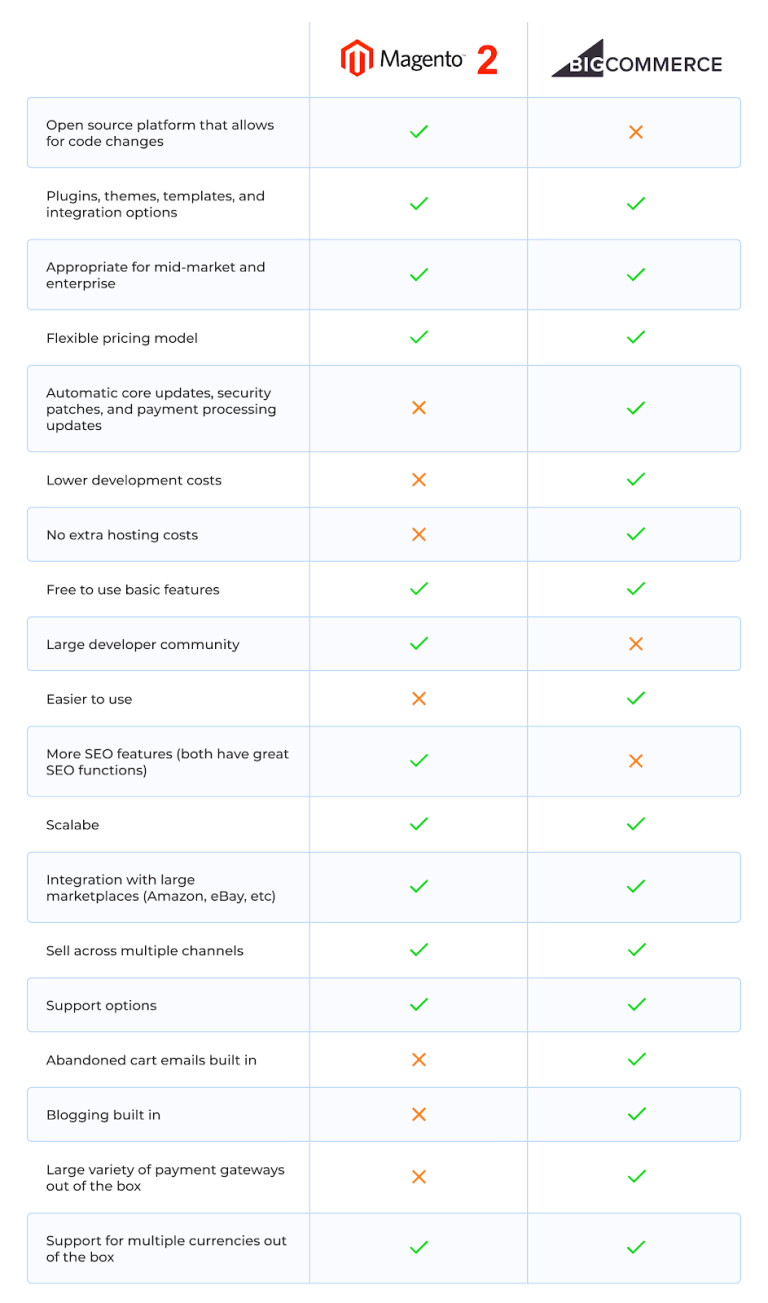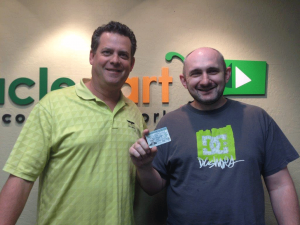After encountering the same SEO issues with eCommerce sites, I thought it was time that we try and prevent a few mis-haps. These eCommerce SEO fails could be costing your business thousands, if not hundreds of thousands in lost revenue. So if you run an eCommerce site, have a look through these common SEO mistakes to see if your site passes with flying colours or is leaving money on the table.

1. Category pages get outranked by the blog
In the haste to get better rankings for high traffic driving category keywords like “maxi dresses”, diving in with blog posts with the same keyword in the title looks like a quick win. However, if your blog is popular it might have a greater page authority than your eCommerce site’s category page and end up ranking higher in the search results. The downside being visitors land on your blog post, a step further away from your category page with the full selection of maxi dresses and a step further still from the add to cart button. All in all, competing with your own content is likely to reduce your conversion rate and ultimately drive revenue down.
If you target one keyword phrase per page then you can avoid competing with your own category landing pages and use the blog to go after people higher in the buying cycle. For example “A/W 2014 dress trends” would make your content fresher than other posts and enable you to link to several of your dress sub categories, whilst deep linking to specific product pages.
2. Product pages are deleted when products are sold out
In the world of SEO, deleting a page is a cardinal sin. In the world of eCommerce SEO, deleting an old product page causes two ways of losing money. Firstly, you worked tirelessly to promote that page. You tweeted it, you pinned in, you might have even done an email campaign or press release on it. You built up the authority of that page, it earned it’s stripes, some customers shared it, some bookmarked it and ultimately links were built to it. If you delete that page, it’s like throwing the baby out with the bathwater. As all of that great authority is just removed from your site. Sad times.
Secondly, what about that poor little customer, they’ve been scouring the internet for hours looking for that perfect gift for mum. They find this incredible sounding product in the search results, they click through with anticipation, only to find… a 404 error. Boo!
Don’t let that customer down, redirect that old product page to another similar product, the search results, even the homepage if you have to or ideally to a message to tell them “so sorry but that product was SO GOOD it’s out of stock, but never fear, here are some links to other products you might like (and you’d better hurry, as you don’t want to miss out AGAIN!)”. Redirecting your old product pages has a double eCommerce benefit because not only do you provide a great user experience to keep that hard earned visitor on your site but you keep the equity of the old page contributing to your overall domain authority for life so when you add new pages a little bit of that authority flows to those pages from launch.
3. Seasonal sections are rebuilt every year
For a lot of retail eCommerce sites, Christmas is where the large majority of the year’s sales happen. So we’ve helped many retail SEO clients to create new “Christmas gift” sections and start ranking for Christmas related keywords. Similarly, for travel eCommerce sites there might be seasonal peaks at different times throughout the year relevant to the types of holidays promoted such as camping or skiing. So we’ve helped our travel SEO clients create content around “what to pack for [holiday type]” guides to get them ranking for camping/skiing terms.
On a number of occasions and across a wide array of different eCommerce platforms from Magento to custom builds, we’ve found that when you remove the seasonal sections from the main navigation, the page URLs are also removed from all existence. Totally destroying the SEO work for that year, killing all the rankings achieved and leaving you back at square one the next year.
So an essential requirement for eCommerce SEO web design is to ensure that the pages can be removed from the navigation (no-one wants to see “Christmas gift ideas” in your drop down in the summer), but that the URLs remain intact. Then all the reputation that you’ve built to that section can linger on year after year, until by the 2nd or 3rd year that season rolls round you’ll at least be outranking everyone else who is still deleting their old URLs and likely be pretty high on page 1 (maybe even at the top)!
4. Pagination blocks the majority of products from being found
This issue is extremely common with custom builds and is unlikely to be an issue with SEO-friendly eCommerce software such as BigCommerce or Shopify.

Pagination is the process of dividing pages of search results into easily digestible (and downloadable) pages. Going back to the maxi dresses example, if you have 40 maxi dresses, and you present 10 products per paginated page then there will be 4 paginated pages. Search engines like Google, need each page of your site’s search results to have unique URLs to be able to include those pages in their index e.g. yourwebsite.com/maxi-dresses-1 and yourwebsite.com/maxi-dresses-2 etc. If your site does not have a XML sitemap that is automatically updated every time you add a new product and you have pagination without unique URLs (e.g. you just have the URL yourwebsite.com/searchresults.aspx), then it’s likely that all the products listed in the search results beyond page 1 of EACH result will NOT be able to be crawled by search engines. This means that all the products listed from page 2 of search results onwards have no chance of ever ranking, no chance of ever sending you any traffic and certainly zero chance of sending you any revenue.
Do proceed with caution when making any changes to URLs, as if you have the same product listed in multiple categories, fixing the pagination issue could cause a duplicate content issue (which is an entirely separate issue that hasn’t made it into this top 5 I’m afraid).
5. Meta data has to be manually entered
This is the ultimate eCommerce SEO fail that I’ve seen on almost every custom-built eCommerce site I’ve ever reviewed. It makes it to the coveted numero uno slot because it is the single MOST VALUABLE action you can take to increase your eCommerce SEO sales, year on year, for years to come. We’ve seen our clients literally add millions of pounds in new revenue through careful implementation of dynamic meta data optimisation.
Meta data includes two very important pieces of content that don’t appear on the page itself, but appear in the place before a visitor gets to your page… the Google/Bing search result. These pieces of content are the title tag and meta description. The title tag should be up to about 60 characters and include the main keywords that describe what the category, sub category, product or content of the page is about. The meta description is usually up to around 150 characters and gives you a bit more room to sell-in the call to action and help win the click through from the search engine.
Where so many eCommerce sites fall down is that, they have the ability to manually enter the title and description but the sheer scale of the tens of thousands of pages they’re dealing with makes this task way too daunting and it never gets done. Even if the eCommerce system is set up to automatically pull in the main page heading into the title tag, whilst this is a start, this still leaves space in the title left to play with, dramatically reducing the chance of ranking for synonyms and variations.
If you’re looking at building your next eCommerce website for SEO, then including the ability to have dynamic title tags based on rules to automatically apply relevant keywords across category, sub category and product levels will have a major impact on your SEO traffic, eCommerce SEO revenue and long term customer acquisition. Ensuring that you can still manually override the dynamic search engine optimisation is also essential as the huge benefit of automated optimisation is to save time initially but refining the optimisation by highest converting products or highest profit driving categories will be how to keep increasing eCommerce SEO sales every year, year after year. Follow my contributions to the blog to find out more about eCommerce SEO, or sign up to the ThoughtShift Guest List, our monthly email, to keep up-to-date on all our digital marketing blog posts, guides and events.






